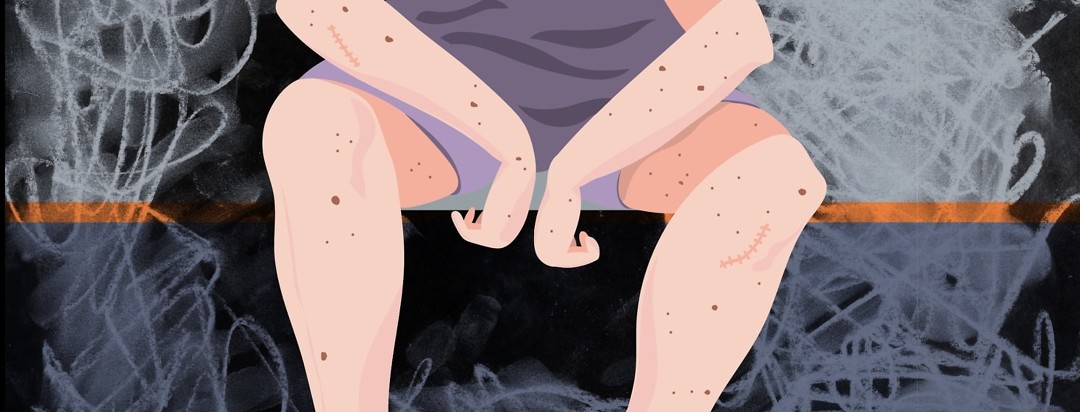New Diagnosis, New Treatment, Same Old Anxiety
I recently had my 6-month checkup with my dermatologist. While I’m happy that it seems that I’m getting new, suspicious areas at a much slower pace than I used to, I’m still not happy any time I see something that doesn’t look right. And for this appointment, I had something I needed to show my doctor.
A scary finding
A month or so prior to the appointment, I noticed what looked like a small mole on my knee, and I was pretty sure I’d not seen it before. I recalled my doctor mentioning at a previous appointment that I should no longer be getting any new moles, and this definitely looked like a new mole. It was so small, though, that I was really, really tempted to just not mention it. I know, that’s the wrong thing to do, but sometimes I’m just tired of needing skin cancer areas treated.
During my skin check, I pointed out the area to my dermatologist. She checked it, and checked it again, and said that it looked to her like a mole but at my age, I shouldn’t be getting any new moles, and she then biopsied it. I wasn’t sure whether to be more offended by the ‘at my age’ comment or more worried about the biopsy results.
So, I did a little research that evening on getting new moles as an adult and found that most adults don’t develop new moles after the age of 30, although they often develop non-mole growths like freckles, “liver spots,” and seborrheic keratoses (a non-cancerous growth that may look like a wart or have a waxy surface).1 And, according to the American Academy of Dermatology, new moles in adults can be a sign of melanoma.2
The results
Thankfully I only had to wait two days for the biopsy results. My doctor called me and said that the area was squamous cell carcinoma in situ. Even though I’ve had skin cancer for over 20 years, I’ve never before had the diagnosis of ‘in situ.’ I asked her what that meant, and she said that it’s an early stage skin cancer and has not yet spread to any surrounding tissue and is still just on the skin.
My doctor said that she would remove it by the ‘scrape and burn’ method, which was also something I’ve not yet experienced – so more research was in store for me. The actual name for the procedure is curettage and electrodesiccation, and it’s a procedure used to treat low-risk tumors and precancerous areas. I discovered it’s usually used to treat small squamous cell areas. After numbing the area, the doctor will scrape the area with a sharp instrument, then burn the site of the tumor with an electrocautery needle to stop the bleeding and kill any remaining cancer cells.3 Sounded easy enough, right? And, thankfully, no incisions or stitches would be necessary.
New diagnosis anxiety
Although I knew it was going to be a fairly easy procedure I still had anxiety before and during it, which I think was because I didn’t really know what to expect. It was a fast procedure, but I surprisingly had to remind myself to breathe during it because I realized I was holding my breath, which was making me feel light-headed. Unfortunately, even easy procedures can be stressful.
Even though I ended up needing a biopsy and then removal of a cancerous area, I’m definitely glad I mentioned the area to my dermatologist. Lesson learned here: no matter how small or insignificant something may seem to you, if it’s out of the ordinary and doesn’t go away, be sure to have your doctor look at it. And the big takeaway? Early detection is best, so this would be a great time to schedule an appointment for your skin check!
Do you have a story you want to share?

Join the conversation